 In the Western cultures, an engagement ring is worn to indicate that a person is engaged to be married. It is separate from a wedding ring, and customarily symbolizes love and commitment between two people. An engagement ring may be made out of silver, gold or platinum, adorned with a single gem or multiple gemstones. Although diamonds have traditionally been used, many colored gemstones are becoming a popular choice in today's engagement rings. In some cultures, both men and women wear matching rings, and in other cultures, engagement rings are used interchangeably with wedding rings.
In the Western cultures, an engagement ring is worn to indicate that a person is engaged to be married. It is separate from a wedding ring, and customarily symbolizes love and commitment between two people. An engagement ring may be made out of silver, gold or platinum, adorned with a single gem or multiple gemstones. Although diamonds have traditionally been used, many colored gemstones are becoming a popular choice in today's engagement rings. In some cultures, both men and women wear matching rings, and in other cultures, engagement rings are used interchangeably with wedding rings.
 In the United States, an engagement ring is given during a marriage proposal, with official wedding rings exchanged between the bride and the groom as part of the wedding ceremony. This practice is known as a "double-ring" ceremony. Most women wear their engagement ring together with their wedding ring and often obtain matching sets. Some prefer to permanently solder both rings together.
In the United States, an engagement ring is given during a marriage proposal, with official wedding rings exchanged between the bride and the groom as part of the wedding ceremony. This practice is known as a "double-ring" ceremony. Most women wear their engagement ring together with their wedding ring and often obtain matching sets. Some prefer to permanently solder both rings together.
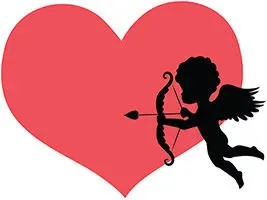 In the United Kingdom, Ireland, North America, Australia, Mexico, Brazil, Iran, Chile, Italy, France, Sweden, Slovenia, and many other countries, the Engagement Ring and/or wedding band is worn on the left ring finger. Greece, Russia, Poland, Austria, Spain, India, Colombia, Venezuela, and Norway, it is worn on the right hand ring finger. In Germany, the engagement ring is worn on the left hand while engaged, then moved to the right hand after marriage. In Brazil, there's no concept of an engagement ring. Both men and women wear the wedding band on their right hand. After the wedding, the rings are moved to the left hands. According to the Nordic custom, both men and women wear their engagement rings. Recently, it is becoming more and more common for the women to propose to men, with ornate men's engagement bands featuring gemstones and diamonds.
In the United Kingdom, Ireland, North America, Australia, Mexico, Brazil, Iran, Chile, Italy, France, Sweden, Slovenia, and many other countries, the Engagement Ring and/or wedding band is worn on the left ring finger. Greece, Russia, Poland, Austria, Spain, India, Colombia, Venezuela, and Norway, it is worn on the right hand ring finger. In Germany, the engagement ring is worn on the left hand while engaged, then moved to the right hand after marriage. In Brazil, there's no concept of an engagement ring. Both men and women wear the wedding band on their right hand. After the wedding, the rings are moved to the left hands. According to the Nordic custom, both men and women wear their engagement rings. Recently, it is becoming more and more common for the women to propose to men, with ornate men's engagement bands featuring gemstones and diamonds.
 Catholicism seems to dictate which hand the engagement ring is worn on. Countries with heavy Catholic influence will wear their engagement rings on the right hand, because left is associated with sin. The only exception is the Dutch Catholics, who wear the rings on their left hands. Jewish brides wear their engagement ring on the left hand, though during the wedding ceremony the wedding band is placed on the right hand. The Muslims don't have a hand preference for engagement or wedding rings, and wearing them is not part of their Islamic wedding celebration. It is a tradition that they adopted from the West. The Chinese bride and groom wear their wedding bands on opposite hands. The groom wears it on his left hand and the bride wears hers on the right hand, since she is in charge of the household and the right hand is considered to be the dominant one.
Catholicism seems to dictate which hand the engagement ring is worn on. Countries with heavy Catholic influence will wear their engagement rings on the right hand, because left is associated with sin. The only exception is the Dutch Catholics, who wear the rings on their left hands. Jewish brides wear their engagement ring on the left hand, though during the wedding ceremony the wedding band is placed on the right hand. The Muslims don't have a hand preference for engagement or wedding rings, and wearing them is not part of their Islamic wedding celebration. It is a tradition that they adopted from the West. The Chinese bride and groom wear their wedding bands on opposite hands. The groom wears it on his left hand and the bride wears hers on the right hand, since she is in charge of the household and the right hand is considered to be the dominant one.
 Couples in the Far East and Asia place a lot of value on the quality of gold used for engagement rings. They are much more likely to purchase 18 and 22 karat gold, since in India, gold is associated with superiority, beauty, and attractiveness. Higher quality gold is considered longer lasting, so investing in a higher quality ring means one is investing in a long-lasting marriage.
Couples in the Far East and Asia place a lot of value on the quality of gold used for engagement rings. They are much more likely to purchase 18 and 22 karat gold, since in India, gold is associated with superiority, beauty, and attractiveness. Higher quality gold is considered longer lasting, so investing in a higher quality ring means one is investing in a long-lasting marriage.
 The Chinese have their own reasons for wearing the engagement ring on the fourth, or ring finger. According to an ancient Chinese belief, different fingers represent different members of a person's family. The thumb represents the parents, the index finger represents the siblings, the middle finger represents oneself, the ring finger represents one's life partner, and the pinkie finger represents one's children. If you close your hand into a fist and then try to open up each finger one at a time you will notice that you can easily separate the thumb (your parents), your index finger (your siblings) and the pinkie finger (your children). However, you won't be able to separate your ring finger from the middle finger. That is because your parents, your siblings, and your children will not live with you forever, but your spouse, the ring finger, is meant to remain with you forever.
The Chinese have their own reasons for wearing the engagement ring on the fourth, or ring finger. According to an ancient Chinese belief, different fingers represent different members of a person's family. The thumb represents the parents, the index finger represents the siblings, the middle finger represents oneself, the ring finger represents one's life partner, and the pinkie finger represents one's children. If you close your hand into a fist and then try to open up each finger one at a time you will notice that you can easily separate the thumb (your parents), your index finger (your siblings) and the pinkie finger (your children). However, you won't be able to separate your ring finger from the middle finger. That is because your parents, your siblings, and your children will not live with you forever, but your spouse, the ring finger, is meant to remain with you forever.
 The tradition of giving a ring for marriage purposes appears to be as old as humanity itself. The cavemen would tie bands woven out of grass onto the wrists, ankles and waists of their mates. There is indication that ancient Egyptians used rings for marriage purposes as well.
The tradition of giving a ring for marriage purposes appears to be as old as humanity itself. The cavemen would tie bands woven out of grass onto the wrists, ankles and waists of their mates. There is indication that ancient Egyptians used rings for marriage purposes as well.
 The rings were initially made out of hemp, leather, bone, ivory, etc., and eventually out of precious metals. The early Egyptians were found buried wearing rings fashioned out of a single silver or gold wire. They were worn on the left ring finger, because the Egyptians believed that the ring finger contained the "vein of love" that led to the heart. In the Bible, Abraham's servant, Eliezer, gave Rebekkah a gold nose ring and two gold armbands upon meeting her at the well to signify his master's desire for her to become his son Isaac's bride.
The rings were initially made out of hemp, leather, bone, ivory, etc., and eventually out of precious metals. The early Egyptians were found buried wearing rings fashioned out of a single silver or gold wire. They were worn on the left ring finger, because the Egyptians believed that the ring finger contained the "vein of love" that led to the heart. In the Bible, Abraham's servant, Eliezer, gave Rebekkah a gold nose ring and two gold armbands upon meeting her at the well to signify his master's desire for her to become his son Isaac's bride.
 The ancient Greeks continued the tradition of engagement rings, although their rings were not required to be given before marriage. Their rings were made out of iron, copper, silver and eventually gold. The giving of a ring was eventually adopted by the Romans, however they were not always used for marriage purposes, but sometimes to signify affection and friendship. In the 2nd century B.C., the Roman brides were often given two rings, one made of gold, to be worn in public, and another one made of iron, to be worn at home, while doing chores. The Romans followed the ancient tradition of wearing it on the left ring finger, and named the vein of love as 'Vena Amoris'. Some Roman men would give their fiances rings with an engraving of a small key on them, believed to be the key to their husbands' hearts. According to other sources, the rings held actual keys to the house.
The ancient Greeks continued the tradition of engagement rings, although their rings were not required to be given before marriage. Their rings were made out of iron, copper, silver and eventually gold. The giving of a ring was eventually adopted by the Romans, however they were not always used for marriage purposes, but sometimes to signify affection and friendship. In the 2nd century B.C., the Roman brides were often given two rings, one made of gold, to be worn in public, and another one made of iron, to be worn at home, while doing chores. The Romans followed the ancient tradition of wearing it on the left ring finger, and named the vein of love as 'Vena Amoris'. Some Roman men would give their fiances rings with an engraving of a small key on them, believed to be the key to their husbands' hearts. According to other sources, the rings held actual keys to the house.
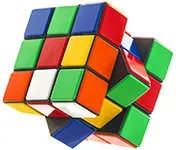 In the first century of B.C., puzzle rings began appearing in Asia, then spread to the Arab world, where sultans and sheiks used them to keep track of their many wives. The puzzle rings would fall apart when taken off, and can only be put back together by the ring's creator, so the husband be able to tell if the wife had taken the ring off to be disloyal.
In the first century of B.C., puzzle rings began appearing in Asia, then spread to the Arab world, where sultans and sheiks used them to keep track of their many wives. The puzzle rings would fall apart when taken off, and can only be put back together by the ring's creator, so the husband be able to tell if the wife had taken the ring off to be disloyal.
 Similarly, in the Middle Ages, the husbands would insist that their wives wear their rings at all times, especially if the husbands were away on a long journey or fighting in a war. When the husband returned and saw the ring on the wife's finger, it would prove that she had been loyal to him.
Similarly, in the Middle Ages, the husbands would insist that their wives wear their rings at all times, especially if the husbands were away on a long journey or fighting in a war. When the husband returned and saw the ring on the wife's finger, it would prove that she had been loyal to him.
 During the Middle Ages, the Ruby was the preferred gemstone for an engagement ring, for its red color signified passionate affection. The Sapphire was another popular choice for an engagement ring, since its deep blue color reminded the wearer of the sky, the beginning of all beginnings. Some men of the Middle Ages used to keep an engagement ring, also known as a betrothal ring, in their hats, always ready to send one to the lady of their choosing.
During the Middle Ages, the Ruby was the preferred gemstone for an engagement ring, for its red color signified passionate affection. The Sapphire was another popular choice for an engagement ring, since its deep blue color reminded the wearer of the sky, the beginning of all beginnings. Some men of the Middle Ages used to keep an engagement ring, also known as a betrothal ring, in their hats, always ready to send one to the lady of their choosing.
 In 1215, Pope Innocent III decreed that a wedding ceremony must be conducted in a church, and must include a wedding ring. He also instituted a waiting period between an engagement and the actual wedding ceremony. It was then that official engagement rings began to be used. The type of the engagement ring worn during that time dictated the wearer's social status, as only the rich were allowed to wear rings with jewels in them.
In 1215, Pope Innocent III decreed that a wedding ceremony must be conducted in a church, and must include a wedding ring. He also instituted a waiting period between an engagement and the actual wedding ceremony. It was then that official engagement rings began to be used. The type of the engagement ring worn during that time dictated the wearer's social status, as only the rich were allowed to wear rings with jewels in them.
 During the time of the Renaissance, Poesy Rings became extremely popular in Europe. These rings had a love poem or message inscribed on the inside. In fact, Shakespeare often mentioned them in his writings. Upon engagement, a silver betrothal poesy ring would be given to the bride; it was replaced with an identical poesy ring in gold following marriage. The poesy ring was used in English, French, Gaelic, Latin, Christian, German, Hebrew, Italian, Russian, and Spanish traditions.
During the time of the Renaissance, Poesy Rings became extremely popular in Europe. These rings had a love poem or message inscribed on the inside. In fact, Shakespeare often mentioned them in his writings. Upon engagement, a silver betrothal poesy ring would be given to the bride; it was replaced with an identical poesy ring in gold following marriage. The poesy ring was used in English, French, Gaelic, Latin, Christian, German, Hebrew, Italian, Russian, and Spanish traditions.
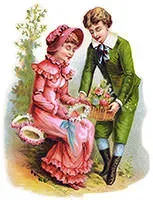 In the Victorian era, an engagement ring was set with gemstones where the first letter of each stone would spell out various words, such as "dearest": Diamond, Emerald, Amethyst, Ruby, Emerald, Sapphire, Tourmaline.
In the Victorian era, an engagement ring was set with gemstones where the first letter of each stone would spell out various words, such as "dearest": Diamond, Emerald, Amethyst, Ruby, Emerald, Sapphire, Tourmaline.
 The modern Western practice of proposing marriage with a
The modern Western practice of proposing marriage with a ![]() diamond ring began in 1477, when Roman Emperor Maximillion I proposed to Mary of Burgundy with a ring that was set with flat diamonds in the shape of an "M". King Edward VI of England is believed to have been the one that designated the left hand as the official marriage hand. This decree was sealed in the Book of Common Prayer in 1549.
diamond ring began in 1477, when Roman Emperor Maximillion I proposed to Mary of Burgundy with a ring that was set with flat diamonds in the shape of an "M". King Edward VI of England is believed to have been the one that designated the left hand as the official marriage hand. This decree was sealed in the Book of Common Prayer in 1549.
 In colonial America, circa 1600, the Puritans tried to abolish the tradition of a wedding ring, since they shunned jewelry as having no moral value. At that time, some brides-to-be received thimbles instead of engagement rings. After the wedding, the bottom part of the thimble would be taken off, leaving a thin band on the finger that resembled a wedding band.
In colonial America, circa 1600, the Puritans tried to abolish the tradition of a wedding ring, since they shunned jewelry as having no moral value. At that time, some brides-to-be received thimbles instead of engagement rings. After the wedding, the bottom part of the thimble would be taken off, leaving a thin band on the finger that resembled a wedding band.
 Wearing a wedding band in addition to an engagement ring is a relatively recent tradition. In 1761, King George III introduced the idea of a guard ring, called the "keeper". He gifted a ring encrusted with diamonds all around to his bride, Queen Charlotte. Today, such a ring evolved into a modern day anniversary ring, eternity band, or a wedding band.
Wearing a wedding band in addition to an engagement ring is a relatively recent tradition. In 1761, King George III introduced the idea of a guard ring, called the "keeper". He gifted a ring encrusted with diamonds all around to his bride, Queen Charlotte. Today, such a ring evolved into a modern day anniversary ring, eternity band, or a wedding band.
 In 1867, diamonds were discovered in the Cape Colony of South Africa, making them more accessible to the public. In 1880, Cecil Rhodes founded the DeBeers Mining Company and quickly gained control of over 90% of the world's
In 1867, diamonds were discovered in the Cape Colony of South Africa, making them more accessible to the public. In 1880, Cecil Rhodes founded the DeBeers Mining Company and quickly gained control of over 90% of the world's ![]() diamond production. To further cement a diamond engagement ring as the ultimate engagement tradition, De Beers launched their "A Diamond is Forever" advertising campaign in 1947 and advocated the idea that a man should spend 2-3 months' salary on a diamond engagement ring.
diamond production. To further cement a diamond engagement ring as the ultimate engagement tradition, De Beers launched their "A Diamond is Forever" advertising campaign in 1947 and advocated the idea that a man should spend 2-3 months' salary on a diamond engagement ring.
 In 1886, Tiffany's introduced their signature, single solitaire
In 1886, Tiffany's introduced their signature, single solitaire ![]() diamond engagement ring set in a six-prong setting. What was once reserved only for the aristocracy quickly became the choice of the masses. In 1900's, platinum was introduced as a more expensive, higher quality metal for engagement and wedding rings. Today, more than 7.7 billion dollars are spent annually on engagement rings in the United States, and over 80% of American women are offered an engagement ring during a marriage proposal.
diamond engagement ring set in a six-prong setting. What was once reserved only for the aristocracy quickly became the choice of the masses. In 1900's, platinum was introduced as a more expensive, higher quality metal for engagement and wedding rings. Today, more than 7.7 billion dollars are spent annually on engagement rings in the United States, and over 80% of American women are offered an engagement ring during a marriage proposal.
 Engagement rings don't always have to be worn on the finger. In the Hindu tradition, women wear toe rings, or "bichiya" to describe their newly engaged status. These toe rings are traditionally made out of silver because gold is a respected material and cannot be worn below the waist.
Engagement rings don't always have to be worn on the finger. In the Hindu tradition, women wear toe rings, or "bichiya" to describe their newly engaged status. These toe rings are traditionally made out of silver because gold is a respected material and cannot be worn below the waist.
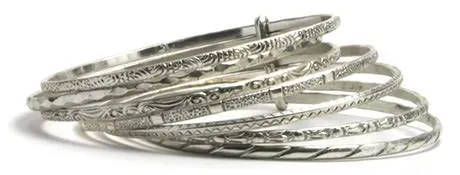 In West Bengal, women are offered iron bangle bracelets that are plated with silver or gold as a sign of love and commitment. Romanian couples exchange silver anniversary bands on their 25th or silver anniversary. They then wear it together with their gold wedding bands. Russian and French women may sport rings made out 3 bands of white, yellow, and rose gold intertwined together.
In West Bengal, women are offered iron bangle bracelets that are plated with silver or gold as a sign of love and commitment. Romanian couples exchange silver anniversary bands on their 25th or silver anniversary. They then wear it together with their gold wedding bands. Russian and French women may sport rings made out 3 bands of white, yellow, and rose gold intertwined together.
 Women in Ireland and other Celtic countries may wear the claddagh ring as an engagement ring. Beginning in the 17th century in Ireland, the claddagh ring served as a traditional engagement ring. It depicts two joined hands holding a crowned heart. Filled with symbolism of love, friendship, and loyalty, the claddagh ring continues to be a popular choice for an engagement ring even today by people all over the world.
Women in Ireland and other Celtic countries may wear the claddagh ring as an engagement ring. Beginning in the 17th century in Ireland, the claddagh ring served as a traditional engagement ring. It depicts two joined hands holding a crowned heart. Filled with symbolism of love, friendship, and loyalty, the claddagh ring continues to be a popular choice for an engagement ring even today by people all over the world.
 Native Americans's engagement/wedding rings differ the most from their Western counterparts. However, they too, use rings to denote love and commitment. Their rings are traditionally made of silver and adorned with such natural or semi-precious stones as
Native Americans's engagement/wedding rings differ the most from their Western counterparts. However, they too, use rings to denote love and commitment. Their rings are traditionally made of silver and adorned with such natural or semi-precious stones as ![]() turquoise, corals, and shells. The symbols on the rings hold powerful connections to their culture.
turquoise, corals, and shells. The symbols on the rings hold powerful connections to their culture.
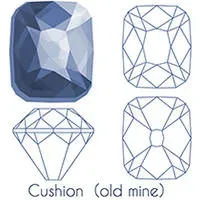 Today's engaged couples face a variety of choices for the engagement rings. The ring can be modern and trendy, or it can reflect a more historical connection to one's culture. It can be fashioned out of silver, white, yellow, or rose gold, or platinum. It can have a single solitaire
Today's engaged couples face a variety of choices for the engagement rings. The ring can be modern and trendy, or it can reflect a more historical connection to one's culture. It can be fashioned out of silver, white, yellow, or rose gold, or platinum. It can have a single solitaire ![]() diamond or a gemstone, or a few diamonds set together meaningfully in a single setting. The shape of each diamond or gemstone may vary as well. Some popular cuts are princess (square), oval, octagon (
diamond or a gemstone, or a few diamonds set together meaningfully in a single setting. The shape of each diamond or gemstone may vary as well. Some popular cuts are princess (square), oval, octagon (![]() emerald cut), marquis, pear, cushion, asscher, radiant, heart, with round being the most classic.
emerald cut), marquis, pear, cushion, asscher, radiant, heart, with round being the most classic.
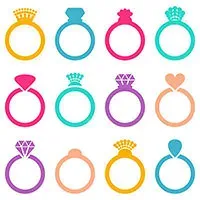 Numerous ring settings exist as well. The classic raised prong setting, otherwise known as the Tiffany setting, will always remain a popular choice. A bezel setting, where the stone is completely encircled by a band of metal, is another trendy choice. Another, newer type of setting is called a "tension setting". The diamonds in this setting are held together by the tension of the ring itself with no prongs at all. This kind of a ring is usually set in platinum, because a stronger type of metal is needed to hold the stone securely.
Numerous ring settings exist as well. The classic raised prong setting, otherwise known as the Tiffany setting, will always remain a popular choice. A bezel setting, where the stone is completely encircled by a band of metal, is another trendy choice. Another, newer type of setting is called a "tension setting". The diamonds in this setting are held together by the tension of the ring itself with no prongs at all. This kind of a ring is usually set in platinum, because a stronger type of metal is needed to hold the stone securely.
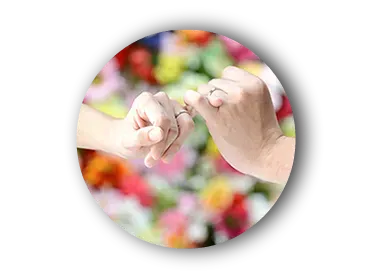 A more recent American tradition of an engagement ring is a promise ring. It is given as a token of love and commitment when a couple is too young to marry, as a pre-engagement ring. Those rings are usually less ornate and may feature smaller gemstones instead of a large center
A more recent American tradition of an engagement ring is a promise ring. It is given as a token of love and commitment when a couple is too young to marry, as a pre-engagement ring. Those rings are usually less ornate and may feature smaller gemstones instead of a large center ![]() diamond.
diamond.